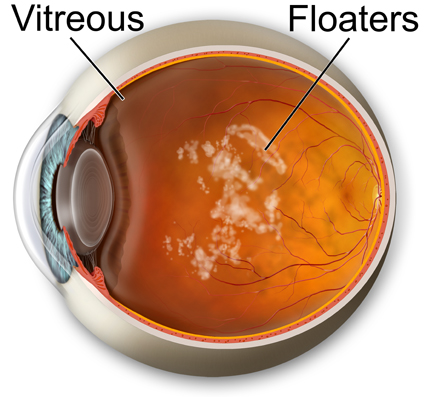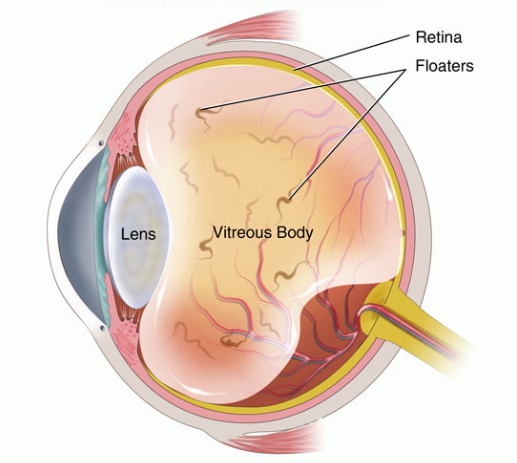Zoloft And Eye Floaters - Can Taking Zoloft Affect Your Vision?It's not unusual for people who use Zoloft (sertraline) to see drifting lines of dark material that looks like bugs moving through your eyes when you are dealing with floaters. This is one of the most common complaints that eye physicians see in their office every day, and thankfully, most of the time they are benign and only rarely are treated with laser eye surgery. Stringy clumps of hair like strands that drift through your vision are the result of separation of the vitreous gel from the retina. What causes floaters with Zoloft?Wavy, dark, stringy lines that move together with your eyes are most likely due to the changing vitreous gel that shrinks and gets more liquified over your lifetime. In particular, the gel called vitreous becomes more watery and this is why those spots, globs, and lines turn up in your vision. The leftover remains of the vitreous gel breaking down will sometimes make dark floaters appear in front of your eyes. Black worms "swimming in front of your eyes" are more visible when looking at a bright overhead light or a white cloud. Gazing at hundreds of particles that look like flies floating in your eyes is annoying and you can't stop them even if you try to make them stop moving. Are Floaters Harmful At Any Distinct Point in time? If you are taking Zoloft and start seeing a burst of new flashes of light or an increase in number of black eye floaters is a signal that you should see your eye doctor without delay. Seeing starbursts of light flickering off to the side of your vision along with a line of floaters across your eyes could mean the vitreous gel is pulling on the retina. One out of every seven times someone notices wormy things in their eyes with sparkly lights there is a retinal problem such as tearing. During an eye exam for black eye floaters, if the doctor sees a retinal problem such as a tear or detachment, you should be seen to a retinologist without delay.For people who are inundated with an abundance of floaters, the bright side is that they will not cause a torn retina in most instances. As you achieve the age of eighty about half of the time you will have gotten wispy strands of fluffy material in your eyes known as vitreous floaters. If you unexpectedly notices bright flashes of light coupled with dark-colored strands then there is a fifteen percent chance of going on to have a torn retina. Spasms of blood vessels deep inside your brain may cause you to see shimmering lights, jagged patterns in the vision, and a floating blind spot; these all occur with ocular or eye migraine attacks in some patients on Zoloft. Usually these do not result in a head ache and they ordinarily have a period of about Thirty minutes. They may be due to spasming blood vessels in your brain. Infections or bleeding within the eye from diabetes for example can result in you seeing tiny dots or black spots moving back and forth in your vision as you move your head. Tiny bits of black fiber or dust that seems to move back and forth in your eyes are typical of floaters; these are very common for nearsighted individuals. There is a lack of studies, trials, and evidence to support the use of eye drops for floater removal. If you ask most ophthalmologists about eye floaters they'll say that nothing can be done and to get used to them, but there are a few that actually use a laser to try to dissolve your floaters. People in certain professions like truck drivers and airline pilots may elect to have eye floaters removed with a surgery called a vitrectomy. |
|
This article is for information purposes only and does not offer legal or medical advice, so nothing in it should be construed as legal or medical advice. The information on laservisionsurgeries.com is only offered for informational purposes. You shouldn’t act or rely on anything in this article or use it as a substitute for legal/medical advice from a licensed professional. The content of this article and website may quickly become outdated, especially due to the nature of the topics covered, which are constantly evolving. The materials and information on laservisionsurgeries.com are not guaranteed to be correct, complete, or timely.
privacy policy

